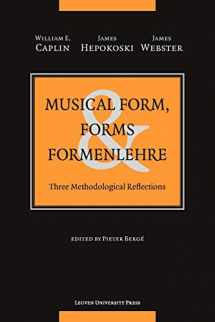
Musical Form, Forms, and Formenlehre: Three Methodological Reflections
Book details
Summary
Description
In Musical Form, Forms, and Formenlehre, three eminent music theorists reflect on the fundamentals of "musical form." They discuss how to analyze form in music and question the relevance of analytical theories and methods in general. They illustrate their basic concepts andc oncerns by offering some concrete analyses of works by Mozart (Idomeneo Overture, Jupiter Symphony) and Beethoven (First and Pastoral Symphony, Egmont Overture, and Die Ruinen von Athen Overture).
The volume is divided into three parts, focusing on Caplin's "theory of formal functions," Hepokoski's concept of "dialogic form," and Webster's method of "multivalent analysis" respectively. Each part begins with a basic essay by one of the three authors. Subsequently, the two opposing authors comment on issues and analyses they consider to be problematic or underdeveloped, in a style that ranges from the gently critical to the overtly polemical. Finally, the author of the initial essay is given the opportunity to reply to the comments, and to further refine his own fundamental ideas on musical form.


We would LOVE it if you could help us and other readers by reviewing the book
Book review



